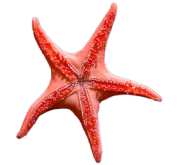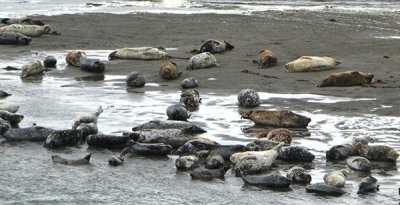ASLC Collaborates with NOAA to Use Novel Satellite Technology in Study of At-risk Harbor Seals October 25, 2016
Seward, Alaska (October 25, 2016)– Scientists from the Alaska SeaLife Center (ASLC) recently returned from the first research mission to utilize new satellite technology for the study of harbor seal populations. The month-long expedition to the Aleutian Islands on board the research vessel Norseman, was conducted in collaboration with the National Oceanic and Atmospheric Administration’s (NOAA) Polar Ecosystems Program.
“The population trends and factors that may be influencing harbor seals remain poorly understood,” said ASLC President and CEO Tara Riemer. “We are excited to increase our understanding of harbor seals and for the potential to better inform the science community and resource managers.”
Co-funded by the National Oceanic and Atmospheric Administration, the study brings together scientists from two different organizations to collaborate on the next steps toward understanding and addressing shared concerns. Using Life History Transmitters (LHX), developed by Dr. Markus Horning, ASLC Science Director, in collaboration with Wildlife Computers, Inc. under funding from the National Science Foundation, researchers will be able to collect survival and reproductive data to better understand harbor seal population trends. Harbor seals in the Aleutian Islands declined by about 67% in the last two decades of the 20th century, and 50-80% during the same time frame in areas west of the Gulf of Alaska. LHX tags are surgically implanted and have a life span of 10 years or more. Using post-mortem satellite-linked data retrieval, LHX tags can provide data on timing and causes of mortality, and reproductive data from females. This allows researchers to estimate birthrates, quantify predation pressure, and analyze other drivers of population trajectories.
Externally attached tags glued to the fur of seals are also used in this study by National Marine Fisheries Service (NMFS) scientists, but typically fall off during the annual molt.
“This satellite tagging project combining externally attached tags and the newly developed implanted tags will allow us to compare and assess data we’ve not had access to before,” said Dr. Horning, ASLC science director and principal investigator for the LHX portion of the study. “It will help us set parameters for a long-term study and provides a better window into the challenges harbor seals are facing, particularly in the Aleutian Chain area.”
ASLC staff working with Dr. Horning on the mission were veterinarian Dr. Pam Tuomi and Research Associate Renae Sattler, as well as Sea World Florida veterinarian Dr. Stacy DiRocco. This research is being conducted under NMFS permit no. 19309 and all applicable animal research and ethics guidelines. Details on the LHX tags can be found on: www.sealtag.org. The mission was chronicled and photographed by the Polar Ecosystems Program team on their blog, Dispatches from the field: Studying at-risk harbor seals in western Aleutians. A link to the blog may be found on at www.alaskasealife.org.
About the Polar Ecosystems Program:The Marine Mammal Laboratory’s Polar Ecosystems Program conducts research and monitoring on pinnipeds in the Arctic, sub-Arctic, and Antarctic marine ecosystems. The research projects focus primarily on abundance, trends, distribution, and foraging behavior of harbor, bearded, ringed, spotted, and ribbon seals in Alaska. The primary objectives of the program are to support management and assessment of population status under the Marine Mammal Protection Act, and to gain a better understanding of the factors responsible for the dynamics of populations and their roles in the ecosystem.
Photo courtesy of Shawn Dahle, NOAA NMFS permit 19309.


